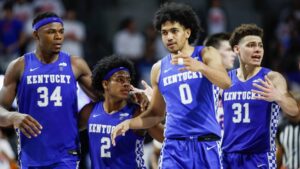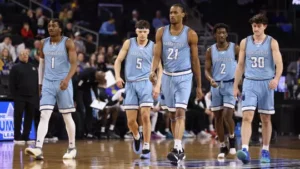
In a riveting display of strategy, athleticism, and determination on the gridiron, the Arcángeles emerged victorious over the Osos with a decisive 29‑14 final score in what has quickly become one of the most talked‑about matchups of the season. The game, marked by shifting momentum, standout performances, and tactical ingenuity, encapsulated the intensity of modern American football and secured its place as a must‑see encounter. This victory not only marked an important turning point in Arcángeles’ campaign but also left Osos reflecting on missed chances and areas for improvement. Here, we unpack the ebb and flow of this gripping contest, spotlighting the key plays, player contributions, and what the result means for both teams moving forward.
As the coin flipped and the whistle blew, the Osos won the toss and chose to receive—signaling an intent to take immediate control of the contest. Their opening drive exemplified their ambition: efficient rushing, varied route combinations, and disciplined execution. They carved out yardage, methodically moving downfield over several plays. But as the red zone loomed, a timely sack by Arcángeles’ defensive end Jeremy Dezhon West—a first‑round pick veteran—halted momentum, forcing the Osos to settle for a field goal. The scoreboard read Osos 3, Arcángeles 0, setting the tone for a game where every yard mattered.
Arcángeles responded with precision. Quarterback Anthony Perkins Jr. strung together a series of pinpoint passes interspersed with well‑timed quarterback draws, culminating in a touchdown strike to wideout Atkins. It wasn’t a long play—just smart route timing and reliable hands—but it was enough to reclaim control and shift the eyes of 15,000 fans.
The first half ebbed between defensive resilience and offensive scheming. Both teams traded blows: Osos tied it again with a touchdown pass after an impressive third‑down conversion, and Arcángeles answered by engineering a no‑huddle drive capped by a touchdown run by Cameron Whitmore, their breakout freshman. That put them ahead 14‑10 at halftime and provided momentum that would define the game’s second half.
The third quarter ramped up the intensity. Arcángeles’ defense sprang to life, with linebacker Le Devin Smith sniffing out a screen pass and racing 30 yards to give his team excellent field position. That play led to a short red‑zone touchdown burst from Perkins Jr., marking his second touchdown of the game and pulling the score to 21‑10.
Osos, feeling the heat, attempted to rally. Their quarterback scrambled to extend plays, and their running back forced a fourth-down conversion deep in Arcángeles’ territory. But once again, Arcángeles’ disciplined front seven rose to the occasion, halting their advance on a critical fourth down. What happened next removed any lingering doubt: Arcángeles took over and drove 75 yards with a blend of rapid passes and ground gains, finishing the march with a deft Perkins Jr. touchdown pass. As the PAT hit, the scoreboard displayed a commanding 28‑14 lead.
Arcángeles added a final late field goal to seal the victory at 29‑14, their bonus meant more by making their kickers precise, their scheme balanced, and their confidence sky‑high.
Statistically, the game illustrated how Arcángeles controlled the pace. They outgained the Osos 370–290, with Perkins Jr. completing 22 of 30 passes for 260 yards, two passing touchdowns, and a rushing tally. Whitmore’s 75 rushing yards complemented tight end Kobe Miranda’s 65 receiving yards and clutch third‑down catches. Defensively, West and Smith combined for 15 total tackles, three sacks, and a forced fumble recovered by DB Troy Glenwood LeFeged Jr.
Osos, meanwhile, delivered valiant performances. Their quarterback posted 235 yards and 1 touchdown in the air, while their lead rusher chipped in 85 rushing yards—their most consistent duo of the season. But inconsistencies in the red zone and failure to convert critical fourth downs ultimately hampered their progress.
This game was not just a tale of statistics. It was a demonstration of Arcángeles’ superior preparation, adaptability, and cohesion. Coach Jeremy West seemed to have his team primed for any scenario: they shifted tempos, exploited mismatches, and capitalized on turnovers. Conversely, Osos showed impressive fight and determination but lacked the subtle adjustments required during high‑pressure moments.
With this win, Arcángeles improve to 5–2 on the season, solidifying their position as playoff contenders. Their balanced offense, opportunistic defense, and ability to perform under stress suggest a team peaking at the right time. Next, they face the Galgos—another top‑tier opponent that will test their red‑zone efficiency and defensive balance.
For Osos, the loss drops them to 4–3. They’re still in playoff contention, but they need to address execution errors—especially near the goal line. Their quarterback will benefit from quicker decision‑making, and their offensive line must shore up protections. They travel next to face the Jefes, a contest that’ll be pivotal for their postseason hopes.
Ultimately, this matchup showcased why college football continues to captivate. It wasn’t about who wore the flashiest helmets—it was about discipline, cohesion, game intelligence, and heart. Arcángeles’ 29‑14 victory over Osos offers a powerful chapter in their season narrative: a triumph earned through tactical clarity and collective execution. For fans and analysts, it’s a reminder that in this sport, balance—between offense and defense, between aggression and composure—often makes all the difference.
As both teams move forward, they carry with them lessons from this clash and ambitions rooted in this moment. Arcángeles are now primed to vie for a championship, while Osos look to rebound with renewed focus and precision. If last weekend’s game was any indication, fans should gear up for more riveting drama on the gridiron.





